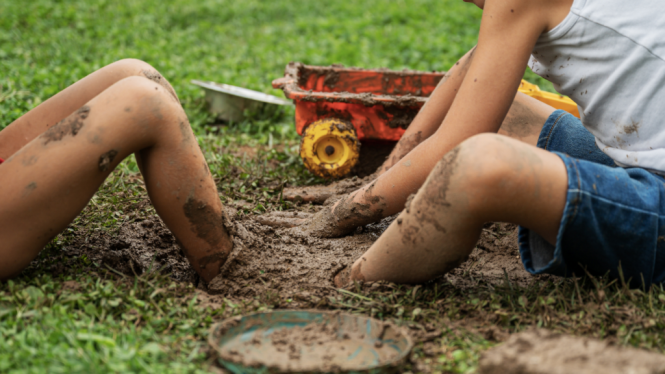
DIY floor mud stains can be a frustrating problem, especially if you’ve just completed a home improvement project. These unsightly marks can ruin the aesthetic appeal of your flooring and affect the overall look of your home. Understanding the nature of the mud stains and the type of flooring can help determine the best course of action. This comprehensive guide explores various methods for tackling DIY floor mud stains, from simple cleaning solutions to more complex procedures. We’ll delve into the most effective removal techniques and help you restore your floors to their original state. This article will walk you through each step, outlining the reasons for choosing specific methods and offering examples of successful stain removal.
Identifying the Type of Mud Stain
Understanding Mud Composition
Mud stains can vary in composition depending on their source. Understanding this crucial aspect will help in determining the best approach for removal. Different types of mud require varying cleaning solutions and methods.
Identifying Mud Types
For example, construction mud, often used in drywall work, may contain different components than mud used for landscaping or other DIY projects.
The Importance of Surface Type
The type of flooring itself plays a crucial role in selecting the appropriate cleaning method. Different surfaces, like tile, hardwood, or laminate, may react differently to various cleaning solutions. For instance, a harsh solvent might damage a delicate wood finish. Knowing your flooring type will help in avoiding potential damage.
Preparing for Stain Removal
Gathering Necessary Supplies
Before you begin, gather all the essential cleaning supplies. This includes appropriate cleaning solutions, cleaning cloths, sponges, containers, and protective gear, such as gloves and eye protection. Having everything readily available will save you time and stress.
Protective Measures
Always prioritize safety when dealing with cleaning solutions. Wear gloves and eye protection to prevent skin and eye irritation. This is crucial, especially when dealing with harsh chemicals. Additionally, ensure adequate ventilation if working in a confined space. Improper handling or storage can pose health risks.
Test the Solution
Test the cleaning solution in an inconspicuous area first. Apply a small amount of the solution to a hidden area of your flooring to check for any adverse reactions, color changes, or damage to the surface. This crucial pre-treatment step helps avoid damaging your flooring.
Effective Stain Removal Techniques
Using Mild Soaps and Water
For light mud stains, a solution of mild dish soap and water often works effectively. Mix a small amount of dish soap into warm water and gently scrub the affected area. Use a soft cloth or sponge and avoid abrasive scrubbing.
Applying Cleaning Solutions
For more stubborn stains, you might need a more targeted approach. For example, a paste made from baking soda and water can help lift stubborn dirt. Apply the mixture to the stain, let it sit for a few minutes and scrub gently.
Using Commercial Cleaners
Some commercial cleaning products are specifically designed for removing stubborn stains. However, always follow the product instructions carefully. Some products may contain harsh chemicals, so prioritize safety and use them cautiously.
Addressing Specific Flooring Types
Cleaning Hardwood Floors
Hardwood floors often require a delicate touch. Use a wood-safe cleaning solution, or a mixture of mild soap and water, with a soft cloth. Avoid excessive moisture and wipe thoroughly to avoid water damage.
Cleaning Tile and Grout
Tile and grout floors are generally more resilient. Apply a solution containing bleach or grout cleaner to the stained area and let it sit. Scrub gently with a brush and rinse well.
Cleaning Laminate Flooring
Laminate floors are susceptible to water damage. Use a damp cloth to gently wipe the stain, then dry completely to avoid swelling. Avoid scrubbing vigorously to prevent scratching.
Preventing Future Mud Stains
Using Drop Cloths
Place drop cloths over flooring areas where mud or construction debris is likely to be tracked or spilled. Drop cloths can significantly lessen the chance of dirt spots.
Cleaning Up Immediately
Remove any visible mud stains immediately to prevent them from setting into the flooring. Prompt action is key to effective stain removal.
Using Protective Coatings
Applying a sealant or protective coating to your flooring can help prevent stains from penetrating the surface. This acts as a barrier to keep out dirt and moisture.
In conclusion, removing DIY floor mud stains requires a systematic approach, understanding the type of mud and the surface affected. By carefully following the steps outlined, you can effectively eliminate these unsightly marks and restore your floors to their former glory. Remember to always test any cleaning solution in an inconspicuous area first. If you are uncertain about the best method for your specific situation, consider contacting a professional cleaning service. For more cleaning tips and tricks, visit our blog!